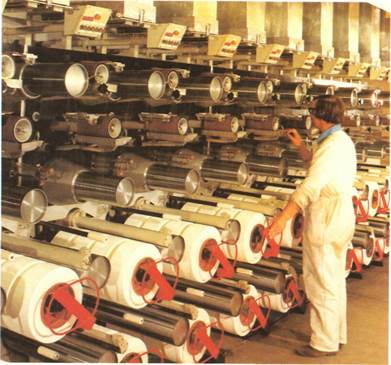
Главная страница Случайная страница
Разделы сайта
АвтомобилиАстрономияБиологияГеографияДом и садДругие языкиДругоеИнформатикаИсторияКультураЛитератураЛогикаМатематикаМедицинаМеталлургияМеханикаОбразованиеОхрана трудаПедагогикаПолитикаПравоПсихологияРелигияРиторикаСоциологияСпортСтроительствоТехнологияТуризмФизикаФилософияФинансыХимияЧерчениеЭкологияЭкономикаЭлектроника
Photochemical reactions
|
|
In many cases, the energy to initiate a reaction comes from heat. The rate of most reactions increases regularly with a rise in temperature. The rate roughly doubles for each 18" F. (10° C) rise in temperature. However, other forms of energy can also initiate reactions. Photochemistry is the branch of chemistry concerned with the interaction between light (photons) and molecules. Such reactions are essential to life on earth. The trapping of solar energy in chemical form by plants is the first step in the
 Atoms, elements, and molecules: Key chemical reactions 21
Atoms, elements, and molecules: Key chemical reactions 21

|
| 2**£ |
down into more than one product is known as a decomposition reaction. For example, heating the compound calcium carbonate produces carbon dioxide gas and quicklime. Quicklime is used in making mortar and glass. If two reactants break down into other products, the reaction is known as a double decomposition reaction. An example of such a reaction is one involving an acid and a base. These compounds react to form a salt and water.
The opposite of decomposition is an addition reaction. The reactants join together instead of breaking down. There is no removal of any part of the reacting molecule. Such a reaction is common in organic chemistry, discussed later in its own section.
If a reaction requires a continuous source of energy (usually heat) to keep it going, it is termed endothermic. In other cases, once a reaction starts, it produces enough energy to sustain itself. There is no need for continued external supplies of energy. Such reactions are termed exothermic.
In some cases, a molecule may break down only partly. It then reforms chemical bonds in a different manner. Such reactions are called rearrangements. They are often significant in synthetic chemistry (organic chemistry) and in the chemistry of living systems (biochemistry). Both organic chemistry and biochemistry are discussed later in this book.
— Регулярная проверка качества ссылок по более чем 100 показателям и ежедневный пересчет показателей качества проекта.
— Все известные форматы ссылок: арендные ссылки, вечные ссылки, публикации (упоминания, мнения, отзывы, статьи, пресс-релизы).
— SeoHammer покажет, где рост или падение, а также запросы, на которые нужно обратить внимание.
SeoHammer еще предоставляет технологию Буст, она ускоряет продвижение в десятки раз, а первые результаты появляются уже в течение первых 7 дней. Зарегистрироваться и Начать продвижение

|
| Potassium hydroxide KOH |
+
2-methyi-2-bromopropane (CH3)3CBr

|
+
o
O-o
| + |
aiX0 + OO
Potassium
| Meth> 3H» |
| Ipropen C-CH |
| H, 0 |
bromide
KBr
Elimination reactions are
important in synthetic chemistry. They involve the formation of a small, simple molecule such as water or ammonia /left). The elimination of water (3) accompanies the conversion of an organic bromide (1) into a double-bonded hydrocarbon (2). in the manufacture of nylon (below), the elimination of water accompanies the reaction that creates the synthetic fiber.
food chain for many living species.
Photochemical reactions are also the basis of photography. In black-and-white photography, the key reaction is the conversion of silver salts to finely-divided particles of silver. These particles appear black when light strikes them. Color photography depends upon a range of complex light-sensitive carbon compounds.
In some cases, the effect of a very small amount of light can be dramatic. A mixture of hydrogen and chlorine gases kept in the dark
at room temperature does not react. However, exposure to light starts a series of reactions known as a chain reaction. These reactions are very explosive.
Chemical elements In the
following section, all the chemical elements are discussed. There are fact entries at the end of each article. The following abbreviations are used: at. no.—atomic number; at. mass—atomic mass (weight); m.p—melting point (freezing point); b.p.—boiling point.
|
|
